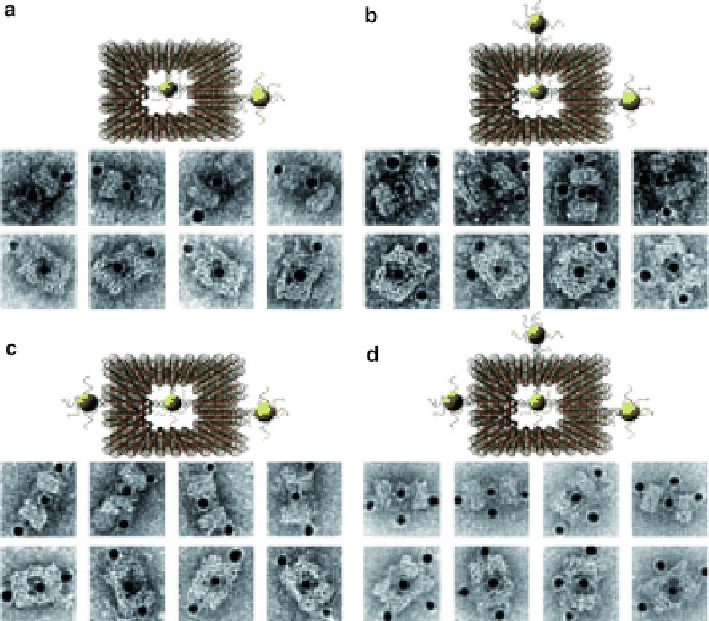Biomedical Engineering Reference
In-Depth Information
Fig. 8.3
Encapsulation of a gold nanoparticle into the cavity of an open-cage DNA origami,
followed by site-specific decorations of gold nanoparticles on selected outer facets of the DNA
origami (Copyright (2011) Wiley. Used with permission from Ref. [
35
])
8.3.2
DNA Origami-Directed Anisotropic
Nanoparticle Assembly
DNA origami represents the latest development in structural DNA nanotechnology
which is able to create a DNA framework with virtually arbitrary geometrical
complexity [
33
]. The only constraint comes from the finite length of the single-
stranded DNA scaffold currently from the M13 virus genome, which sets an upper
size (or molecular weight) limit for the structures built by DNA origami [
34
]. One
important feature of a DNA origami-based structure (often called a DNA origami)
lies in its high surface addressability benefiting from the hundreds of staple strands
(each having a unique sequence) that help the folding of the long circular M13
genome into a desired shape.
Yan et al. showed that an open-cage DNA origami with a hollow interior could
be employed to encapsulate a gold nanoparticle so that the spherical symmetry
of the nanoparticle's original DNA decoration could be broken [
35
](Fig.
8.3
).

Search WWH ::

Custom Search